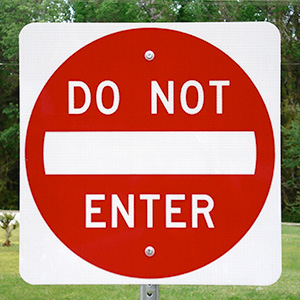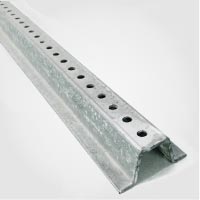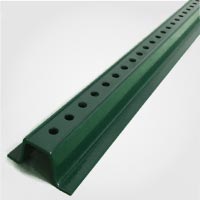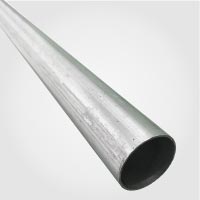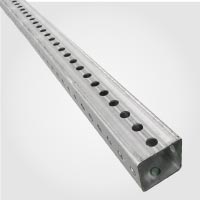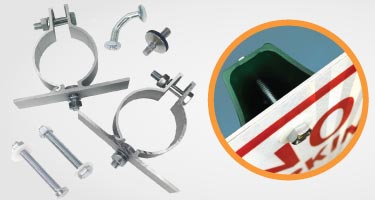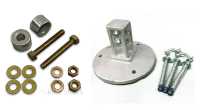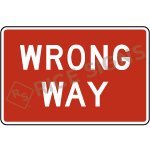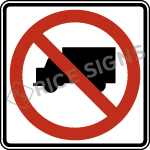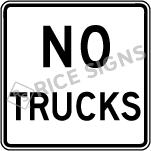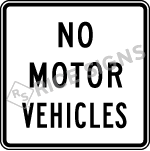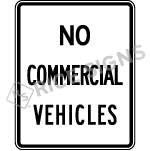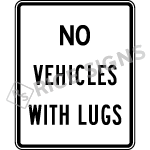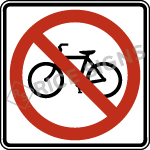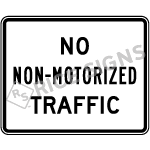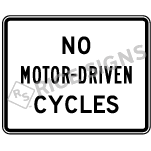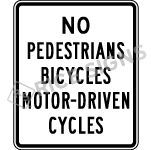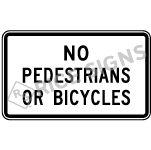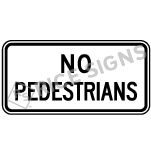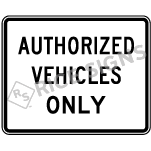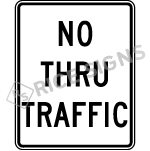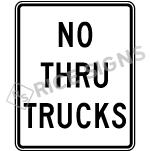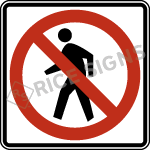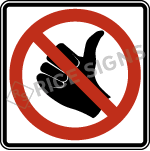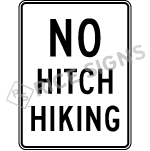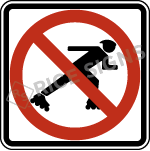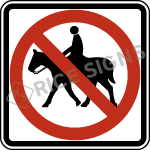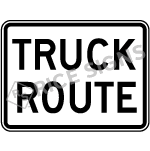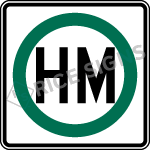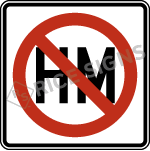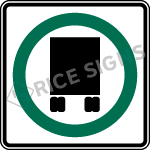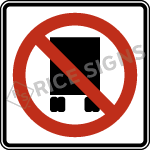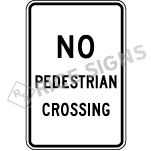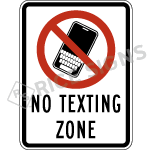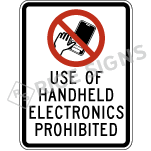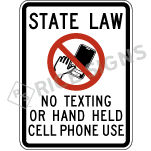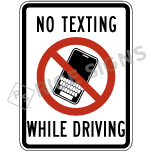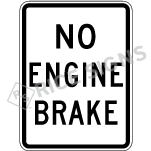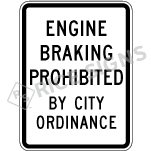Do Not Enter Signs
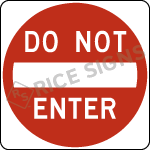
The meaning of a Do Not Enter sign (MUTCD R5-1) is to inform drivers that they are not permitted to enter a specific roadway or area, typically because it is designated as a one-way street or a restricted zone.
MUTCD R5-1 Guidance
R5-1 FAQ
Do Not Enter Sign Details:
- Sign is manufactured on durable rust-proof .080" aluminum
- Pre-punched 3/8" mounting holes in top and bottom for easy installation.
- Meets M.U.T.C.D. specifications for highway use.
| MATERIAL | SIZE | WORDING | PRICE | ADD TO CART | Catalog Part # |
|---|---|---|---|---|---|

High Intensity Prismatic | ♦ 24" x 24" High Intensity Prismatic | Do Not Enter | 1 to 4: $72.60 5 to 9: $68.97 10 +: $65.34 |
SKU:R5-1-2424-HIP |
R5-1-2424-HIP |
30" x 30" High Intensity Prismatic | Do Not Enter | $88.11 per sign any quantity |
SKU:R5-1-3030-HIP |
R5-1-3030-HIP | |
36" x 36" High Intensity Prismatic | Do Not Enter | 1 to 4: $163.79 5 to 9: $155.60 10 +: $147.41 |
SKU:R5-1-3636-HIP |
R5-1-3636-HIP | |
48" x 48" High Intensity Prismatic | Do Not Enter | 1 to 4: $244.20 5 to 9: $231.99 10 +: $219.78 |
SKU:R5-1-4848-HIP |
R5-1-4848-HIP |
In Stock - Usually ships same or next business day.
Full Cube Prismatic Reflective on .080" Aluminum:| MATERIAL | SIZE | WORDING | PRICE | ADD TO CART | Catalog Part # |
|---|---|---|---|---|---|

Full Cube Prismatic | ♦ 24" x 24" Full Cube Prismatic | Do Not Enter | 1 to 4: $81.18 5 to 9: $77.12 10 +: $73.06 |
SKU:R5-1-2424-UPG |
R5-1-2424-UPG |
30" x 30" Full Cube Prismatic | Do Not Enter | $98.21 per sign any quantity |
SKU:R5-1-3030-UPG |
R5-1-3030-UPG | |
36" x 36" Full Cube Prismatic | Do Not Enter | 1 to 4: $184.91 5 to 9: $175.66 10 +: $166.42 |
SKU:R5-1-3636-UPG |
R5-1-3636-UPG | |
48" x 48" Full Cube Prismatic | Do Not Enter | 1 to 4: $329.23 5 to 9: $312.77 10 +: $296.31 |
SKU:R5-1-4848-UPG |
R5-1-4848-UPG |
In Stock - Usually ships same or next business day.
♦ Sign size is available, although not specifically included in Federal M.U.T.C.D.

Available Reflective Finishes:
- Most common reflective finish used for traffic signs
- Meets federal minimum requirements
- 10 Year Outdoor Durability
- Brightest and most visible
- Exceeds federal minimum requirements
- 10 Year Outdoor Durability
Other Restrictive Signs
Understanding the Meaning of a Do Not Enter Sign
Have you ever encountered a Do Not Enter sign and wondered what its purpose is or how to react? These signs play a crucial role in maintaining safety on our roads and in various facilities. In this blog post, we will explore the importance of Do Not Enter signs, their different types, proper placement, customization options, material choices, legal implications, and tips for drivers encountering them. Let us dive in and learn how these signs contribute to a safer environment for everyone.
Short Summary
-
Do Not Enter signs are essential for maintaining safety and order on roads and in facilities.
-
They alert drivers of opposing traffic, regulate traffic flow, ensure restricted access to certain areas, and must be properly understood to be effective.
-
Drivers should respect Do Not Enter signs by adhering to the warnings provided for safety purposes.
The Importance of Do Not Enter Signs
Do Not Enter signs are essential for ensuring safety and order on our roads and within various facilities. By providing clear and unambiguous warnings, these road signs help prevent head-on collisions, regulate traffic flow, and ensure restricted access to specific areas. They are a critical component of our transportation system, helping to avoid accidents, reduce confusion, and maintain a secure environment for drivers, pedestrians, and property owners alike.
But what makes these signs so effective, and how do they achieve their intended purpose? Understanding the design and purpose of Do Not Enter signs is key to understanding their effectiveness. These signs are signs of these signs.
Preventing Head-On Collisions
One of the primary functions of Do Not Enter signs is to prevent head-on collisions by directing the flow of traffic and prohibiting vehicles from accessing prohibited areas. When drivers encounter these signs, they are alerted to the presence of opposing traffic, reducing the likelihood of a potential head-on collision.
By adhering to the warnings provided by Do Not Enter signs, drivers can significantly decrease the risk of accidents and create a safer environment for all road users.
Regulating Traffic Flow
Another crucial role of Do Not Enter signs is regulating traffic flow. These signs are essential in controlling traffic by disallowing vehicles from accessing certain roadways. Proper placement of Do Not Enter signs helps preserve order and safety on the roads by deterring vehicles from going against the flow of traffic or entering prohibited areas.
This efficient regulation of traffic flow is vital for maintaining a smooth and safe transportation system for everyone.
Ensuring Restricted Access
Do Not Enter signs also guarantee restricted access to specific areas, such as private property, construction sites, and hazardous zones. These signs provide clear and comprehensible instructions, diminishing confusion and ensuring that individuals respect the restricted access areas.
By restricting access to certain areas, Do Not Enter signs contribute to safety by preventing unauthorized entry, maintaining security, and helping organizations comply with regulations and standards.
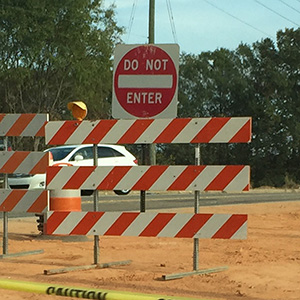
Picture of a Do Not Enter sign installed on a barricade in a workzone
What is the color of a Do Not Enter sign? This sign typically features a white backgound with a red circle with a white rectangle across its diameter, containing the words 'DO NOT ENTER' in bold, capital letters. What to do if you encounter this sign? The sign is placed at the entrance of the prohibited road or area to prevent drivers from mistakenly entering it and potentially causing accidents, traffic congestion, or other hazards. It helps maintain the flow of traffic and contributes to the safety and efficiency of the transportation system.
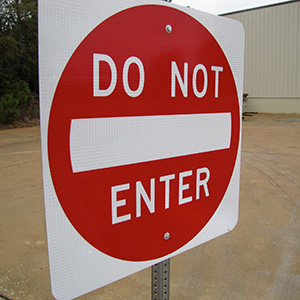
This photo shows where the hardware is installed on the Do Not Enter sign
Types of Do Not Enter Signs
There are various types of Do Not Enter signs, each serving a specific purpose and catering to different needs. These include:
-
Regulatory signs, which enforce traffic laws
-
OSHA safety signs, which prevent injuries in workplaces
-
Private property signs, which restrict access to private areas
Understanding the different types of Do Not Enter signs and their intended use is crucial for ensuring their effectiveness and proper application.
Regulatory Signs
Regulatory signs are used to implement traffic laws and adhere to MUTCD regulations. They contribute to the security of drivers and pedestrians by providing unambiguous directives and alerts. These signs encompass various categories, such as a regulatory sign like:
-
Speed limit signs
-
Stop signs
-
Yield signs
-
No parking signs
-
No U-turn signs
-
Do Not Enter signs
Compliance with MUTCD regulations is mandated by the Federal Highway Administration to ensure the safety of drivers and pedestrians.
OSHA Safety Signs
OSHA safety signs are used in workplaces to prevent injuries and maintain safety standards. They are designed to comply with the standards set by the Occupational Safety and Health Administration (OSHA) in the United States. These signs come in three primary severity classifications: Danger Signs, Warning Signs, and Caution Signs. They help warn workers and visitors of workplace hazards and promote safe practices.
Compliance with OSHA standards is essential when utilizing safety signs in the workplace. It is important to ensure that the signs are properly placed and clearly visible to all workers.
Private Property Signs
Private property signs are used to:
-
Denote that an area is private property
-
Restrict access to unauthorized individuals
-
Enforce property boundaries
-
Maintain the security and privacy of the property owner.
Regulatory signs, OSHA safety signs, and custom signs with logos, and custom messages are all available for private property use. Compliance with local regulations is essential when using private property signs.
Proper Placement of Do Not Enter Signs
Proper placement of Do Not Enter signs is essential for their effectiveness. These signs should be prominently displayed in locations where restricted access is necessary, such as one-way streets, exit ramps, and off-ramps.
Correct positioning of these signs ensures that drivers can easily perceive them, reducing the risk of accidents and maintaining overall road safety.
One-Way Streets
One-way streets require Do Not Enter signs to prevent drivers from entering in the wrong direction. These signs should be situated at the entrance of one-way streets to indicate that vehicles are not permitted to enter from that direction.
Proper placement of Do Not Enter signs on one-way streets is crucial for avoiding confusion and ensuring the safety of drivers and pedestrians.
Exit Ramps
Exit ramps need Do Not Enter signs to avoid drivers mistakenly entering the ramp and causing accidents. These signs should be placed near the termination of the exit ramp in positions suitable for full visual perception of a road user initiating to exit. Proper placement of these signs helps prevent head-on collisions and other accidents caused by drivers entering the ramp in the wrong direction.
Signs should be placed in a way that is visible to drivers, and should be placed in a way that is visible to drivers.
Off-Ramps
Off-ramps also require Do Not Enter signs to prevent drivers from entering the wrong way and causing collisions. It is recommended that Do Not Enter signs be affixed to the right side of the roadway, so that they are visible to traffic that may attempt to enter the roadway or ramp in the wrong direction.
Ensuring proper placement of Do Not Enter signs on off-ramps is essential for maintaining road safety and preventing accidents.
Customizing Your Do Not Enter Sign
Customizing your Do Not Enter sign can make it more effective and tailored to your specific needs. Some ways to customize your sign include:
-
Adding logos to reinforce your brand or property ownership
-
Incorporating custom messages to provide additional information or instructions
-
Choosing icons to make your sign more visually appealing and easily recognizable
By customizing your Do Not Enter sign, you can create a sign that is unique to your needs and helps convey your message effectively.
Let us explore the various customization options available for Do Not Enter signs.
Selecting the most appropriate method for your needs can enhance the effectiveness and visual appeal of your sign.
Custom Messages
Custom messages can provide additional information or instructions for drivers encountering your Do Not Enter sign. These messages can be incorporated into the design of the sign using a variety of methods, such as customizing the fields within the selected sign or creating an Outlook signature for email messages to include a custom message.
Custom messages can help ensure that drivers fully understand the purpose of the sign and any specific restrictions or requirements associated with the restricted area.
Material Options for Do Not Enter Signs
Frequently Asked Questions
What does do not enter mean sign?
The Do Not Enter sign indicates that you are not allowed to proceed in the direction of the sign and is meant to prevent head-on collisions. It can be found at roadway openings, exit ramps, crossovers on divided roadways and numerous locations on one-way roads.
What signs say do not enter?
DO NOT ENTER signs are usually seen at the start of one-way streets and ramps, often accompanied by a Wrong Way sign. This indicates that drivers will face opposing traffic (and possibly high speeds) if they ignore the warning and enter the restricted area.
What is the difference between wrong way sign and do not enter sign?
The difference between a wrong way sign and a do not enter sign is that the do not enter sign is used to warn drivers of oncoming traffic, while a wrong way sign is intended to supplement this warning and reinforce it.
The wrong way sign is usually seen in combination with the do not enter sign to alert drivers that they are heading in the wrong direction.
What does no entry for all types of vehicles mean?
No entry for all types of vehicles means drivers must not enter the road, off-ramp, exit ramp, or crossover where the sign is posted, as there will be opposing traffic coming towards them.
This is a safety measure to ensure that drivers do not enter a road or area where they could be in danger. It is important to obey these signs and not attempt to enter the area, as it could lead to a serious accident.
What is the main purpose of Do Not Enter signs?
The main purpose of Do Not Enter signs is to prevent accidents, regulate traffic flow, and ensure restricted access to areas.
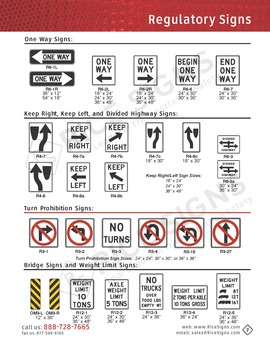
Catalog Page 7
Click to view
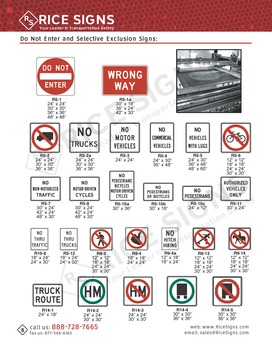
Catalog Page 8
Click to view
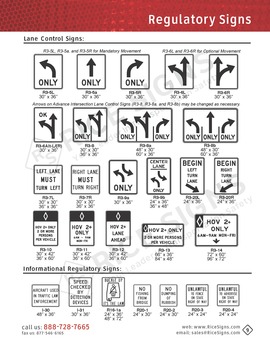
Catalog Page 9
Click to view
Specifications:
| Legend: | DO NOT ENTER |
| MUTCD Sign Code #: | R5-1 |
| Shape: | Square |
| Color: | WHITE on RED |
| Available Sizes and Weights: | Size: 24" x 24"; Ship Weight: 5 lbs |
| Size: 30" x 30"; Ship Weight: 7.8 lbs | |
| Size: 36" x 36"; Ship Weight: 11.2 lbs | |
| Size: 48" x 48"; Ship Weight: 19.9 lbs | |
| Available Styles: | High Intensity Prismatic Reflective on .080" Aluminum |
| Full Cube Prismatic Reflective on .080" Aluminum | |
| Full Description: | R5-1 have a red background color. The text and border are white and it is in the shape of a square. |
Do Not Enter Sign Photos:
